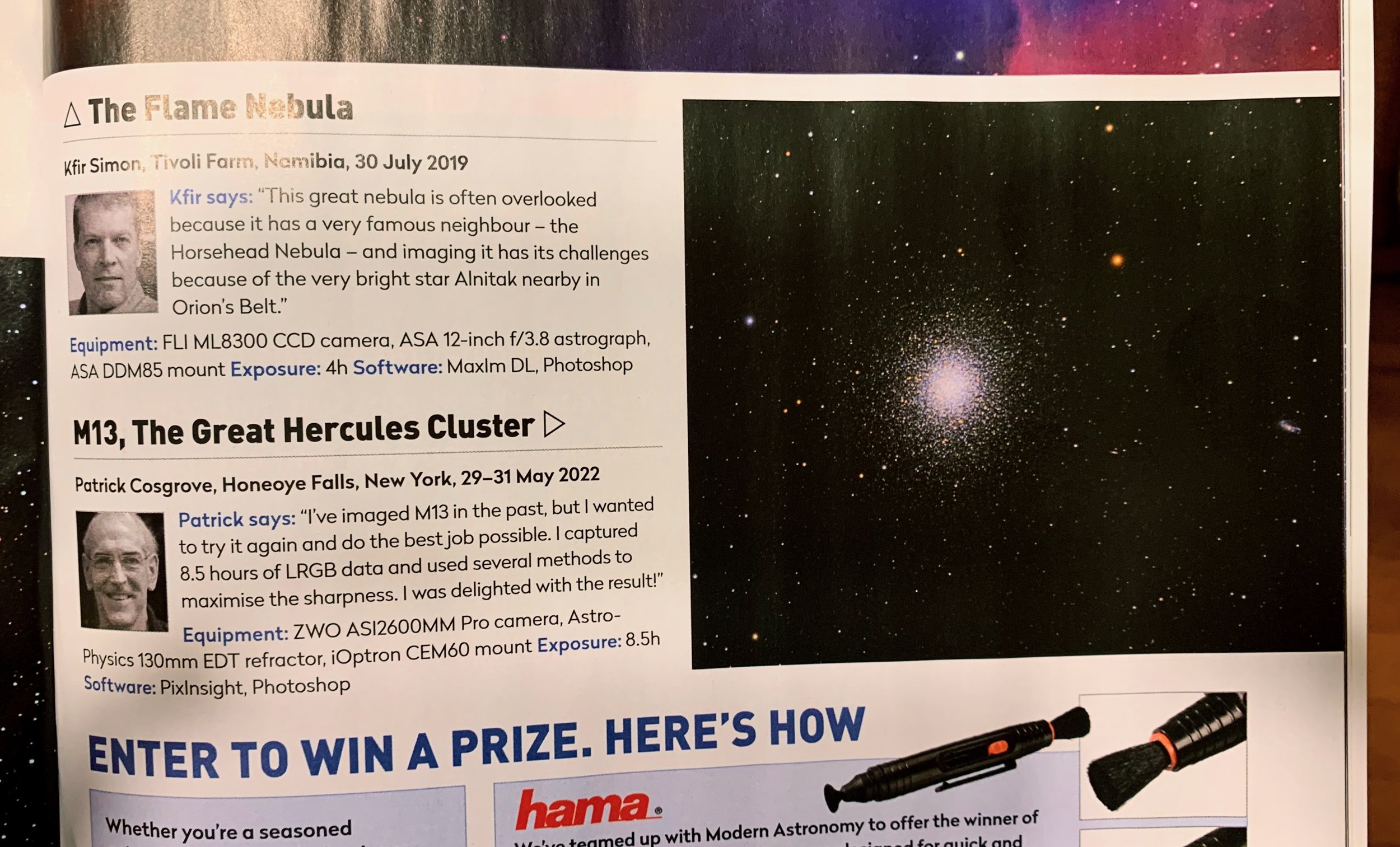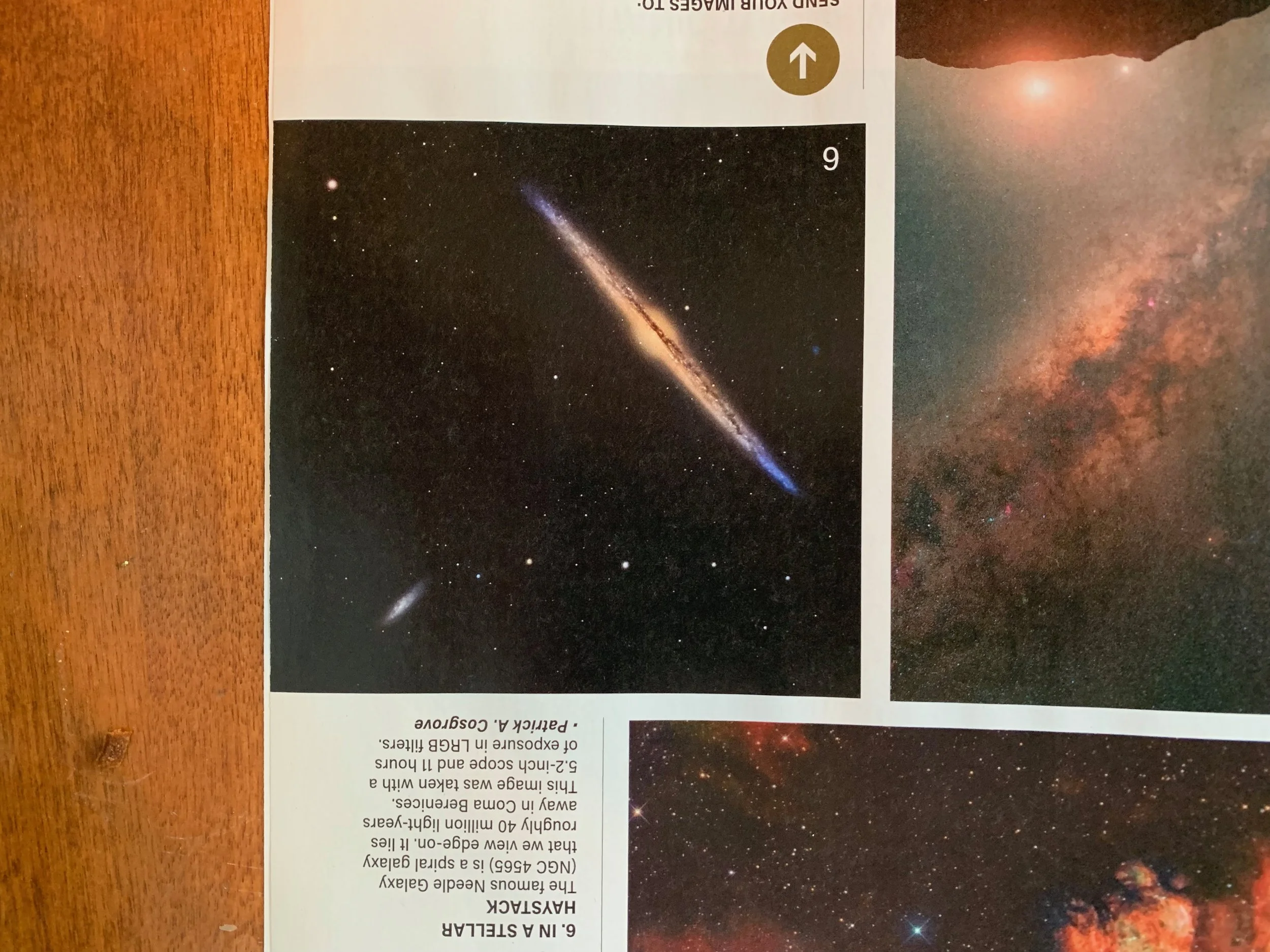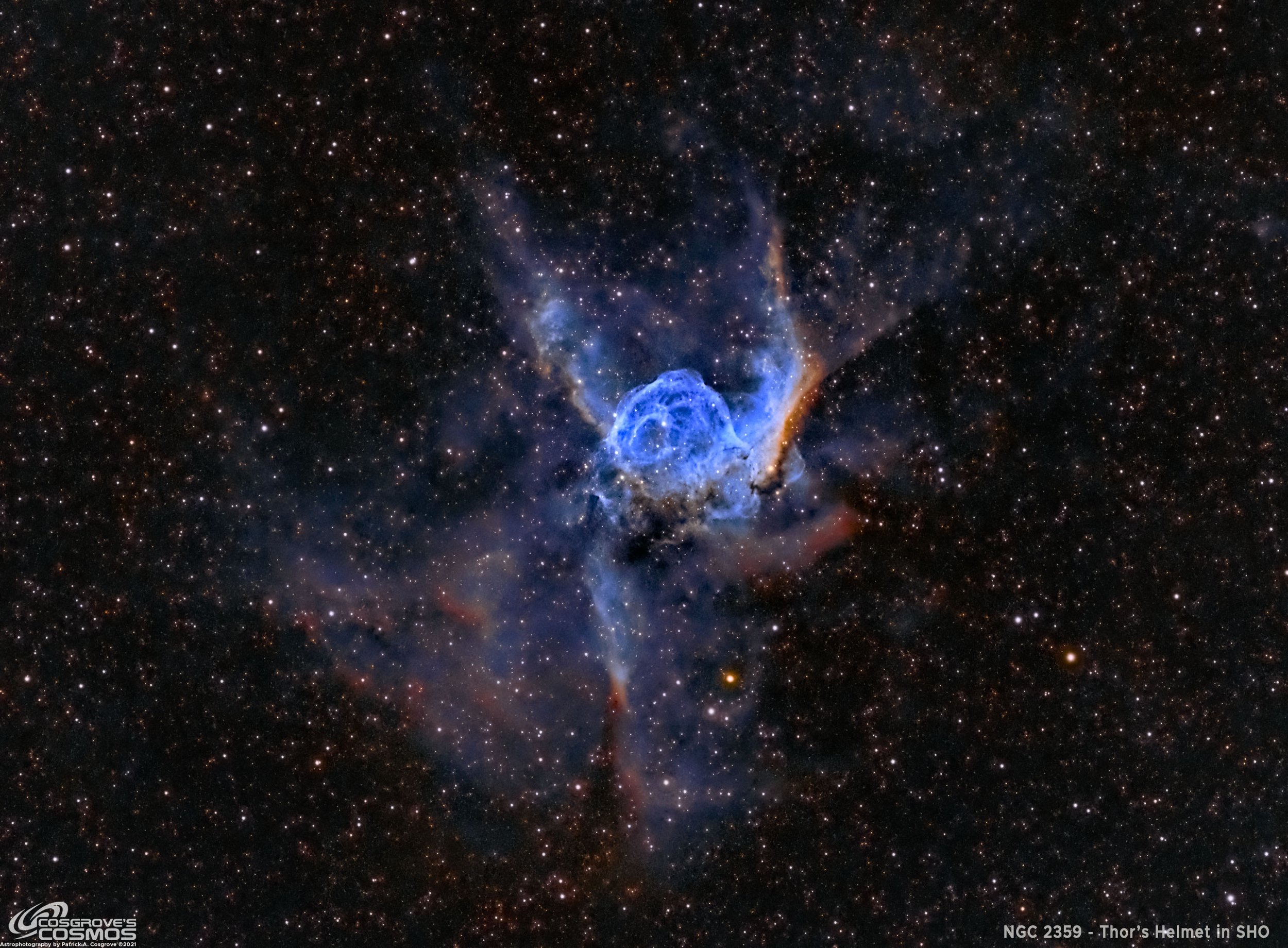Getting Published!
Feb 19, 2023
(updated May 30, 2023)
Table of Contents Show (Click on lines to navigate)
Companion Video
Below is the companion video to this article, which can be seen on my YouTube channel.
Introduction
Budding Astrophotographers are typically eager to share their images with family and friends. They are proud of their work, and the images are fascinating glimpses into the universe - so why not!
At some point, you begin to think about becoming published. After all, being published in a major astronomy magazine is the ultimate form of sharing - and it’s also a point of validation that your work is worth sharing at the largest scale! You certainly don’t do it for money. Most publications do not pay for the images they publish. Astronomy Magazine is the exception to the rule, as they pay $25 per image. ( I have had several images published in my Astronomy Magazine now - I tell my wife that I am well on the way to paying off the thousands of dollars of gear I bought. If Astronomy magazine just prints about 1000 more images, I will be doing well!)
The topic of this post is how you can get your own Astrophotographic images published.
To be honest, I feel a little strange writing this article. After all, I just started my Astrophotographic Journey a little more than three years ago, and I only started submitting my images for publication a year ago.
So who am I to pontificate on how to get your images published?
The reason I am writing this post is that I have had a surprising number of people ask me how I go about this.
I’ve always said that I can’t tell you the best way to do things, but I am more than willing to share how I do things and what has worked for me.
I started submitting images a little over a year ago, and in that time, I have had nine images published. So not a bad track record - though I can imagine that there are many accomplished astrophotographers out there who did much better - both because their images were superior to mine and because they have a more successful submission method.
My complete list of published images can be seen HERE.
So in this post, I will walk through what I see as the key tips I can provide to help you get your images published!
My First Publication in Astronomy Magazine - Jan, 2022 issue!
This was the first image that was published by Sky & Telescope. This was in the June 2022 issue.
Even though M13 is a very common target, I worked hard to get this very version with excellent color and detail. BBC S@N published it in their October 2022 issue.
This was published in the Oct 2022 issue of S&T. Imagine my reaction to seeing this page for the first time!
This was in the May 2022 edition of Astronomy Magazine. In this case, the editor took the time to read my post on how I processed the image!
I was super proud of this image of NGC 4565 - it was published in the November 2022 issue of Astronomy Magazine
This was a simple 3 hour SHO integration of the Elephant’s Trunk with my then-new Askar FRA400 platform. It was published in the September issue of Astronomy Magazine.
Solid Images
When you are beginning, there is a lot to learn. The blocking and tackling of data capture. Getting quality calibration files. Learning how to preprocess and stack your images. And, of course, there is the processing of the images themselves. This is something you may never be done learning about!
The point here is that as you are learning, your images may not yet be the best they can be. Give yourself time to build your skills. Wait until you think your images are solid and comparable to others you have seen that have been published.
In short - you don’t want to submit an image like THIS! (click to enlarge)
Rather, wait until your skills improve and you can submit something like THIS! (click to enlarge)
Starting out with Solid images is foundational to publishing your images - you don’t want to rush things!
Get your data capture skills down.
Work on getting solid calibration files.
Work on your pocessing skills.
Compare your images to the ones that are getting published.
Now you can always submit images before you are ready - but really - you are probably wasting your time and the time of the magazine editors who are assessing your work. I am not sure it is a good strategy to have magazine editors associate your name with lesser works.
Only Submit Images That You Are Proud Of!
We already talked about waiting until your images are good - once they are pretty solid, be strategic in what you submit.
submit only the ones that are the cream of the crop.
Share your best images.
Share images that stand out in some way.
Maybe an interesting crop
Or perhaps an extremely long integration
Or a unique mix of broadband and narrowbad data.
If it's a shot of M31 - what makes it stand out from the thousands of other images taken from this popular target?
I once submitted an image of M13 - a very common target - but this image was unusually sharp and I think that is what got it selected.
Send Full-resolution Images Without Watermarks
Since both you and the editors want your image to look great in the publication, send the highest resolution image you can send.
I tend to watermark my images with my Cosgrove's Cosmos watermark icon. Early on, I submitted images that way.
However, I have been contacted by editors and asked to send a version without the watermark, or in other cases, the watermark was cropped out or digitally removed. Why put a speed bump on your road to publication?
Make the editor's job as easy as possible and send high res clean copies of your image.
TIFF images are technically superior, and many people will want to submit images in this file format. However, TiFF images can be quite large. I submit my images via email, and I want to make sure that the images get through and are not caught in the internet "pipes." So I submit Jpegs and have had good luck doing so.
Create A List of Publications That You Will Submit Your Images To
I submit to the publications that I subscribe to. For me, this was Sky & Telescope Magazine, Astronomy Magazine, BBC Sky @ Night Magazine, Amateur Astrophotography Magazine, and finally, the NASA APOD site.
Each of these has a web page that describes their submission process and an email that can be used for submission:
https://skyandtelescope.org/submitting-photos-faq/
https://astronomy.com/magazine/about-us/contributor-guidelines/2004/06/photo-submission-guidelines
https://www.skyatnightmagazine.com/send-us-your-astrophotos/
https://apod.nasa.gov/apod/lib/apsubmit2015.html
contact@amateurastrophotography.com (No Webpage here, just use this email!)
Check these out, and collect the right list of emails you will need. If your targeted publication is not listed here, go to their website and search. They are likely to have information on how they prefer to handle submissions.
Create An Email Note For Your Submission
This email will describe the particulars of the image being submitted as well as your own contact information. I
f there is something noteworthy or interesting about this image, note it concisely. I always assume that editors will quickly scan this email, not reading it in depth - at least until they select the image for publication.
Here is a sample of one that I actually have sent (note this is one where I included the watermark and they asked to remove it):
For a subject line, I always use something like:
“Image Submission: NGC 2359 - Thor’s Helmet - 2.5 hrs in SHO”
Submit Your Images
Use the draft text for your note to create a series of submission notes and send one to each of your targeted publications. Remember to attach the image ( I screwed up more than once!) before hitting send!
Keep a notebook on what submissions you have made and when you made them.
Wait!
I have had images published within three weeks of submission and others published nine months after submission.
I have also had a lot of submissions that have never been published to date - shocking! I know!
So plan on having some patience here. You never know when an editor will decide your image is just what they need for their publication.
How Will You Know That Your Images Have Been Chosen For Publication?
I have found that this is different for each publication:
Astronomy Magazine
I received a check for $25 - sometimes before anything was published. Sometimes I got it after the digital edition was released but before the print edition was released.
I received a complimentary edition of the issue my image was in - often well after publication
Astronomy mag is a class operation in my book!
Sky & Telescope Magazine
I never hear from them - ever!
I look at every page of every issue!
It is a real rush when you open the mag a see a two-page spread of your submitted image
BBC Sky @ Night
Usually, they contact you by email beforehand
They will also ask for a photo of you that they can use in their print edition
They will also ask you for a quote regarding the image they can use.
Amateur Astrophotography Magazine
I think I got either a heads-up via Twitter or Facebook - not sure which now
Nasa APOD
No idea - I have never made it here - yet!
Update May 30, 2023: I just had my first image accepted by NASA APOD! What happens is that you are contacted by email a few days before your image will be shown as the APOD - it will include a link to a draft web page that is not “live” yet, and you will be asked to look it over and correct anything that may be wrong. A few days later, your image will go Live!
Why Would They Pick Your Image?
Exotic Targets that not a lot of people shoot
Image fits a theme or article they are working on
Your image is technically impressive
Your image seems to round out a montage as they lay out a page
The whim of the editors
In Summary
These simple tips should help you get started. Be patient - it may take a while before one of your images is used - but if you don’t submit, you won’t get any images published!
This year I have been fortunate to have a good number of my images published. Who knows what the future will bring? For me, capturing data, processing the image, and sharing its story really motivates me. Getting an image published is just the icing on the cake!
Good luck with your efforts!
If you are a seasoned pro and have many of your images published - please share with me your tips and suggestions! I will add them to this posting and credit you with the info!















